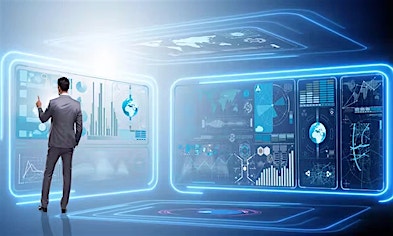Climate change is an existential challenge of the current time, posing unfathomable threats to the continued existence of human civilization and the natural systems that support it. Against the scale of this global catastrophe, technology provides a promising avenue. From reducing carbon-intensive processes to building resistance to future climate impacts, technology solutions can play a vital role in mitigating the adverse consequences of climate change.
Climate woes
One of the most detrimental aspects of changing climactic patterns has been the rise of acute natural hazards worldwide. In the first six months of 2021, the insured losses due to natural disasters stood at a staggering $42 billion – a ten-year high – according to insurance broker AON. As per records from the Emergency Event Database (EM-DAT), almost one in every three persons in the US was affected by some natural disaster in 2021. Given the interconnectedness of the global economy, these calamities cause disruption at several crucial touchpoints, resulting in severed supply chains and entrenched vulnerabilities across the wider economy.
There are two key risks brought on by climate change. The first, physical risks include all the visible damages wrought by increasingly severe weather patterns. The second type, called transitional risks, includes the perils associated with factors like policy, market, technology, and reputation. From emission limits to pollution control norms, environmental regulations are increasingly becoming more stringent across the globe. Concomitant to this, consumers are also observed to have become ‘greener’ in their purchasing habits, with over a third of them globally willing to pay a premium for more sustainable offerings. Meanwhile, technology risks include all the costs involved in transitioning to less carbon-intensive processes and equipment.
The combination of these policy instruments and other risks can have concerning implications on the bottom lines of companies. As climate change-induced extreme weather events intensify in the near future, it becomes all the more imperative for businesses to evaluate these risks proactively and adopt suitable solutions that can address the gravity of this worldwide calamity.
Technology for sustainability
“Forward-looking” activities are essential to help companies move away from retroactive to more proactive, real-time approaches towards addressing climate change. This approach is critical for organisations to be able to address and prevent issues before they become unmitigable challenges. While emissions data can help businesses identify the appropriate avenues for decarbonisation pathways, it is imperative to acquire this emissions data at, or near, real-time across all scopes. By implementing quicker, efficient carbon accounting strategies, an organisation can promptly adjust their operations in real-time, ensuring that all ‘net-zero’ targets are achieved in the desired time frame.
In addition, enterprise operations can significantly be made more efficient using automation, enabling processes to rely on minimal resources and inculcate heightened circular economy principles. Meanwhile, AI/ML can help devise comprehensive life cycle assessments complemented by algorithms that can assess changes in operation and suggest potential environment-friendly alternatives in real time. Technologies like IoT also provide avenues for companies to transition from retroactive to proactive approaches by delivering real-time data for all their operations.
Transforming legacy enterprise management systems into cloud platforms can offer enhanced decarbonization pathways for organizations. Cloud services allow flexible, resilient mechanisms to manage workflows and limit redundancies. In addition, businesses can adopt sustainable packaging and recycled hardware architecture to further expand their sustainability margins. IT solutions can also facilitate the transition to renewable energy by enabling the integration of renewable energy sources into the grid, as well as by harnessing renewable energy sources to power data centres and other IT infrastructure.
Overall, given the complexity of the climate crisis, technological advancements can provide an effective means for overhauling carbon-intensive systems into more efficient, environment-friendly ones. Traditional, siloed systems depending on spreadsheets and manual data management processes need to be upgraded with more robust, proactive operational systems.
The road ahead
As several reports now indicate, the world might breach the 1.5-degree celsius target for global warming set by the Paris Agreement. As such, it becomes imperative to heighten efforts toward reducing emissions and providing a sustainable future for the generations to come. Resources must be conserved adequately, and carbon-intensive operations limited across all business processes.
Technology is one promising tool that can adequately address the scale of this existential challenge. With the right technology levers, organisations can bring about holistic transformations across their entire value chains, building systems that can ensure a sustainable planet for us all. Given the state of the current global climate catastrophes, the time is critical now for decisive, proactive action.





